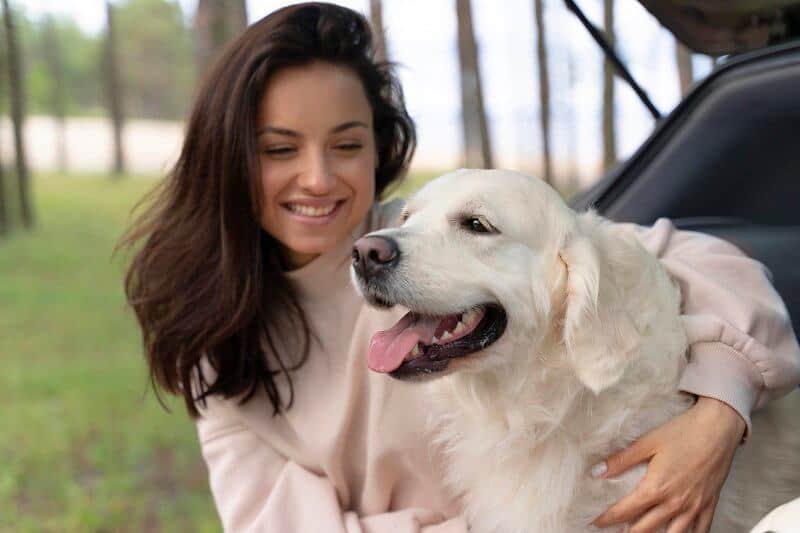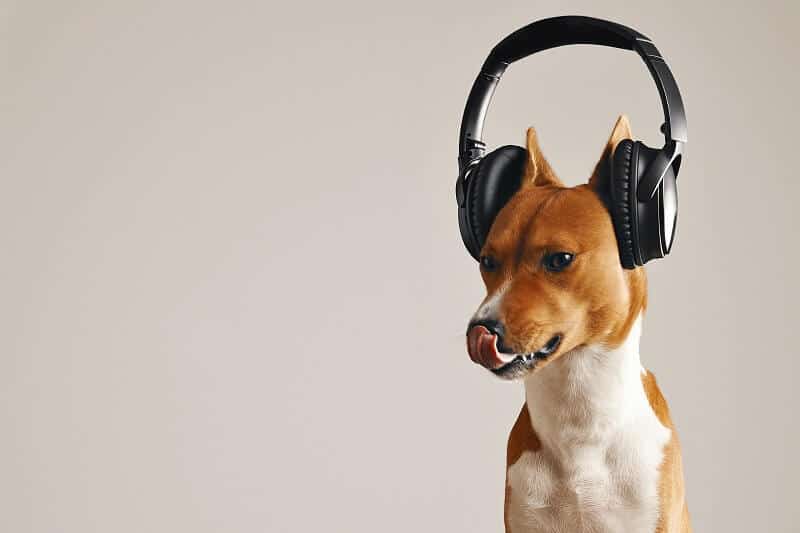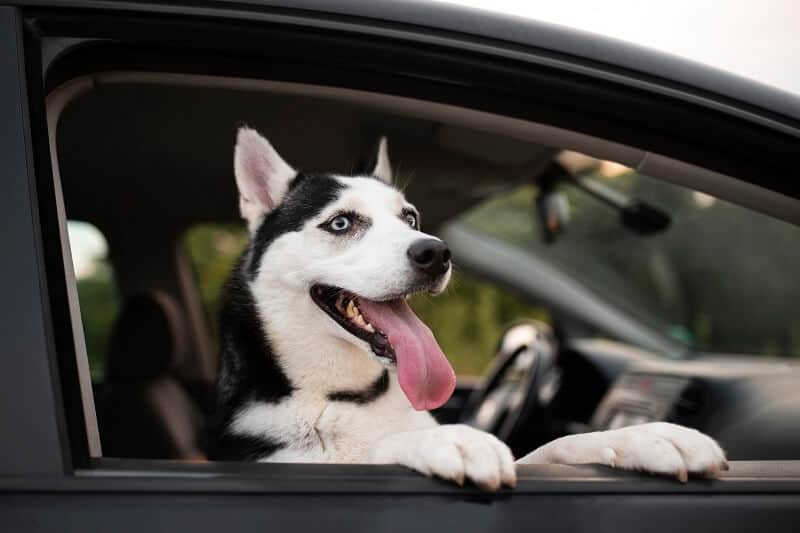A recent study at the University of Helsinki found that out of 13,715 pet dogs of 264 breeds, 72.5% showed at least one anxiety behavior, according to the Smithsonian Magazine. Like humans, dogs experience stress and anxiety from time to time. Your furry friend might feel anxious due to noise, crowds, change of environment, or fear of heights. If you’re traveling in a car, the noise from the engine might trigger your dog’s anxiety. Your dog can also experience travel anxiety because they’re only used to taking short trips to the vet. Or they’re prone to motion sickness, which makes them feel nauseous when the car starts moving. Whatever the reasons, there are practical solutions to calm your dog to ensure your travel experience is stress-free. If you’re planning to go on a road trip with your furry friend, below are ways to tackle your dog’s travel anxiety.

Exercise Your Dog Before Hitting the Road
Exercising is an excellent remedy for anxiety, not just for humans but also for dogs. Ideally, getting your furry friend to exercise for at least 20 minutes before a car trip can help them feel less anxious. That’s because physical exercises trigger the release of endorphins that boost positive mood and balance hormones. A long walk or run, playing fetch, and tug will also tire your dog. As a result, your furry friend will feel relaxed or even sleep in the car, making your journey less stressful. Therefore, make it a habit to consistently tire your puppy or senior dog every time you intend to go on a long-distance road trip. Also, be sure to bring plenty of water to keep your pet hydrated.

Consider Desensitization to Address Your Dog’s Travel Anxiety
Desensitization or exposure therapy is an effective treatment technique used to help humans overcome phobia and anxiety. You can apply the same concept to help your dog cope with stress when traveling by car. This step entails exposing your pet to situations they fear most. However, it would help if you didn’t expose them to their fears at once but at low levels. Then increase the exposure gradually until your pet becomes comfortable with the feared situation. You may also combine desensitization with counterconditioning. This trick involves pairing fearful situations with something your furry friend likes to dig, like their favorite treat.
For instance, if your dog shows signs of reluctance or fear near cars, stand outside your house where they can see the vehicle at a distance. Putting your pet in such a situation while feeding them their delicious treats makes them concerned about the car, but they won’t overreact. Consider moving a little closer to the vehicle and monitor your dog’s behavior. Give them their favorite treats, praise them for being closer to the car, and repeat the exercise. Remember to keep the sessions short and invest a considerable amount of time in desensitization to help your dog overcome travel anxiety.
Plan for Multiple Stops on the Road
If your dog becomes nervous when traveling in a car, make sure to plan for frequent breaks when creating an itinerary to pet-friendly destinations in the world. Choose a route that allows you to stop multiple times at appropriate spots. Stopping your vehicle for ten to twenty minutes after every two or four hours of driving helps your dog find some form of relief from motion discomfort. Take advantage of the frequent breaks to walk your dog for a few minutes to shake off their anxiety. Also, ensure your dog drinks some water and uses the potty whenever you stop the car. However, you can always place a no-spill water bowl by your dog’s side in the car so they can stay hydrated.
Use Positive Reinforcement
If you have a new puppy or senior dog that dislikes the idea of travel, positive reinforcement can help them overcome travel anxiety. This tactic makes getting into the car a fun-filled occasion. For example, you may use tasty treats or your dog’s favorite toys to lure them in the car or praise them. Once the dog is in the car, don’t drive off immediately. Instead, spend some time in the car with them to get familiar with the new environment. After a few days or weeks, the car won’t be an object of fear to your puppy. So you may take a short, gentle road trip because dogs are prone to motion sickness, especially when they are young. But with time you can increase the travel distance. Crate training, giving rewards for good behavior, and using calming supplements, are other great ways to calm your pet’s travel anxiety.

Choose Comfortable Road Trip Cars
The type of road trip car you choose will also impact your dog’s well-being during long-distance travel. If your current ride isn’t ideal for road tripping with your four-legged buddy, consider investing in a new one. But with so many cars available for dog owners, choosing the right one can be daunting. Experts recommend settling for a model with a flat cargo area for placing your pet carrier. An ideal automobile will also have sliding side doors or a low loading floor that allows small and older dogs to climb in and out of the car with ease. Other factors to consider when comparing automobile models at auto shops include automatic climate control, quiet cabin, and backseat camera. Remember, a car with a quiet cabin is ideal for dogs that are prone to noise sensitivity. They are likely to feel nervous when exposed to wind, car, or road noise. On the other hand, having a backseat camera helps you reassure your pet without shouting, which often triggers anxiety.
Make Your Pooch Feel Comfortable in the Car
Remember, anxiety in dogs can increase due to a change of environment, and the car isn’t an exception. Heat and humidity in vehicles worsen motion sickness, making dogs feel uneasy. As a pet parent, it’s your duty to ensure you create a cozy environment for your pup in the car. You can achieve the best outcomes by adjusting the temperature, so the interior stays cool throughout the journey. Also, crack open some windows so that enough fresh air circulates inside the vehicle.
Most importantly, bring items that make your dog feel comfortable and at home while in the car. Must-have dog items for a road trip include toys, a dog bed, blanket, collapsible bowl, dog chews, leash, safety harnesses, and favorite treats. One of your old t-shirts might also work wonders in keeping your four-legged friend happy.

Play Music in the Car
There’s something about music that helps calm nerves in humans and different animal species, including dogs. With this in mind, try playing soothing music in the car whenever you’re going for a ride with your furry friend. You’ll notice that your dog feels more comfortable and less anxious about the vehicle’s movement and surroundings. That’s because music blocks the engine sounds and street noise that cause noise sensitivity, making your pet feel anxious. But before you can play any playlist, find out which type of music dogs like. According to research findings published in the Physiology and Behavior journal, dogs feel calm when listening to soft rock and reggae.
Apply Gentle Pressure to Soothe Your Dog
While a vehicle itself can be intimidating, it might not be the only reason your dog feels anxious about traveling. For some dogs, former road mishaps can trigger negative emotions and memories. For instance, if your pup was involved in an auto accident before or had a bad experience at the vet, a car trip can easily trigger unhappy memories. Fortunately, you can help your anxious pup stay calm on a road trip by adding gentle pressure. You may use a dog anxiety wrap or vest like Thunder shirt to soothe your pup. Restraints, such as dog car harnesses, are other ideal products that make dogs feel less anxious. If you have a small dog, you’ll notice they feel safe in a crate or carrier, so ensure you have one in the car.

Consult Your Vet about Road Tripping with Your dog
Before you can hop in your car and drive away with your anxious pup, visit your vet. You want to rule out any health condition that may be the cause of your dog’s anxiety. Furthermore, if your puppy’s anxiety level is extreme, a professional vet will detect signs you might have missed. They’ll then offer the best treatment options, including behavioral training and supplements to calm your anxious dog.
Animal species, especially dogs, experience travel anxiety too often due to various reasons. If your dog is prone to car sickness, it’ll be anxious to travel. For some dogs, engine sounds and past traumatic car accidents can trigger anxiety. It’s worth noting that your dog will exhibit various symptoms when anxious about travel. These may include excessive urinating, lip licking, cowering, howling, and barking. Luckily, travel anxiety in dogs is manageable. Consider desensitization and counterconditioning, applying gentle pressure, and exercise. Also, consult your vet before going for long road trips, plan for multiple stops, play music, and, most importantly, pick the right road trip vehicle.
Our other Travel Related Articles:
Traveling With Your Pets and the Things You Would Need
Traveling in a Limousine Alone With Your Dog


